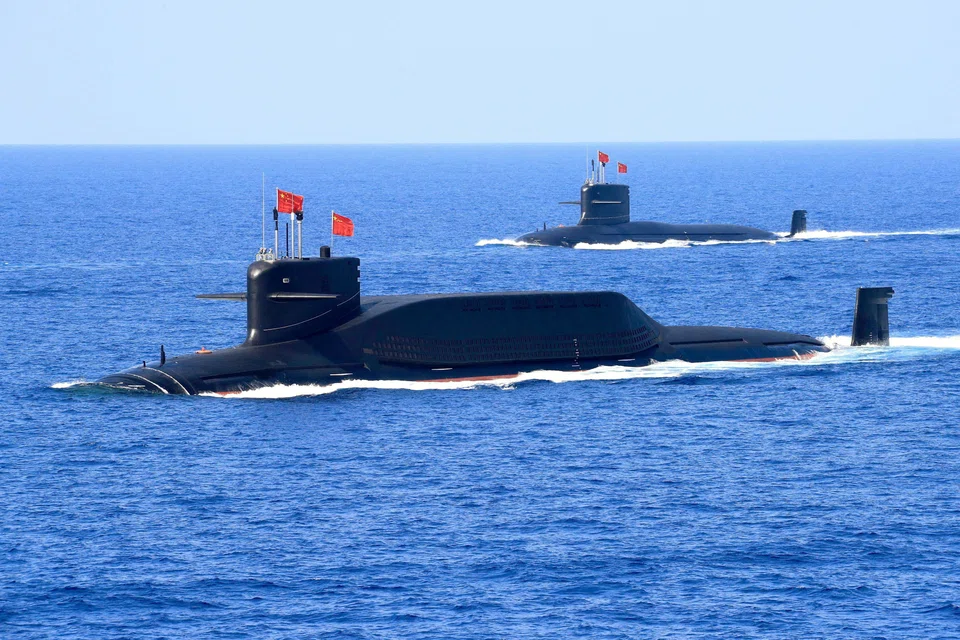US sounds alarm bell on China’s military development
With the US reaffirming its view that China is its biggest threat and warning of a widening military gap, Lianhe Zaobao associate editor Han Yong Hong notes that once the US loses its overwhelming hard power, the entire chain of efforts to suppress China will also fall apart.

A 29 July report released by the bipartisan US Congressional Commission on the National Defense Strategy (NDS) does not hide its anxiety about the situation facing the US, including the challenges faced by the US military. While the report has not attracted much attention in China, Chinese citizens may feel that it is a rare positive evaluation of China’s strength by the US.
US’s outdated strategy
At the outset, the 114-page report emphasises in its summary that the threats the US faces are the most serious and most challenging the nation has encountered since 1945 and include the potential for near-term major war, but the US military is “not prepared”.
The report boldly proposes that the US should significantly increase military resource investment, prepare for multiple wars and implement a Multiple Theater Force Construct.
To this end, cooperation with allies and partners is necessary to ensure simultaneous defence of the US homeland and response to threats in the Indo-Pacific, Europe and the Middle East.
The commission was tasked to review whether the US Department of Defense’s strategy, formulated before the Russia-Ukraine war and the Israel-Hamas conflict, is still applicable. The report assesses that the design and force structure of US defence strategy are outdated, and the defence industrial base is grossly inadequate to provide the equipment, technology and munitions needed today, let alone given the demands of great power conflict.
... while the US “still has the world’s strongest military with the farthest reach, within 1,000 miles of China’s shore, [the US has] lost military dominance and could lose a war”. — Eric Edelman, Vice-Chair, NDS Commission

The report believes that the US should change its longstanding post-Cold War two-war construct, as the alliance between China, Russia, Iran and North Korea has created a real risk of simultaneous protracted conflicts in multiple theatres worldwide.
The report reiterates that China poses the preeminent challenge to US interests and the most formidable military threat. In many ways, China is outpacing the US and has largely negated the US military advantage in the Western Pacific through two decades of focused military investment. China currently boasts the largest navy in the world with over 370 ships and submarines, and the largest aviation force in its region.
In contrast, the US Navy’s “ability to construct, maintain, and repair the maritime forces it requires is fundamentally in doubt” due to insufficient shipbuilding industrial capacity. The report also notes that the US military’s combat capability is at an inflection point.
Vice-chair of the NDS Commission, Eric Edelman, also stated that while the US “still has the world’s strongest military with the farthest reach, within 1,000 miles of China’s shore, [the US has] lost military dominance and could lose a war”.
Since July, the People’s Liberation Army not only attended numerous military parades and celebrations around the world but also flexed its military muscles on at least three occasions.
US concerns not unfounded
The US Congress typically releases reports like this before the Department of Defense updates its strategy, to feed hawkish elements and US military industry interests, and to provide reasons and ammunition to increase military budgets.

China usually strongly refutes such reports for “playing up the China threat” and “fearmongering”. However, China did not respond strongly this time. One can see that the report’s observations on China’s military capabilities are not entirely exaggerated. From another perspective, US concerns are not entirely unfounded.
Indeed, the Chinese army is not what it used to be. Since July, the People’s Liberation Army not only attended numerous military parades and celebrations around the world but also flexed its military muscles on at least three occasions. It demonstrated the new heights that it has reached in global naval and air power projection capabilities while displaying its military strength against the US and NATO.
This includes the first time Chinese and Russian bombers were seen flying near Alaska on 24 July; and Chinese troops heading to Tanzania in early July to participate in the Peace Unity-2024 joint land and sea military exercise with Tanzania and Mozambique in late July.
The Chinese side also deployed two Type 071 comprehensive landing ships and a Type 052D guided missile destroyer to escort the cross-border transport of heavy weapons and equipment, and then transported troops from the Central Theater Command to Africa on a Y-20 strategic transport aircraft.
... China’s drone industry is outstanding and can be said to be at the forefront of the world. At the same time, the military application of drones would also rewrite the traditional mode of combat.

Also, on 29 July, the Type 052D guided-missile destroyer Jiaozuo was deployed to Finland to participate in a joint military operation with Russia. This was interpreted as an exercise on NATO’s “doorstep”, expressing China’s dissatisfaction with NATO’s increasing involvement in Asia-Pacific affairs, just as the approach of Chinese bombers to Alaska was seen as a countermeasure against frequent US reconnaissance along China’s coast.
In fact, China’s drone industry is outstanding and can be said to be at the forefront of the world. At the same time, the military application of drones would also rewrite the traditional mode of combat.
Balancing development with global interests
These are all the inevitable result of China’s economic rise and its strong industrial base and manufacturing capabilities. As written in the report, if the US defence industry does not address its shortcomings, the development gap between the US and China will widen.
In future great power competition between the US and China, if the US does not have a decisive military advantage, what kind of situation might that lead to? Indeed, a series of international issues will follow.
... once the US loses its overwhelming hard power, the entire chain of efforts to suppress China will also fall apart.

Thus, it can be anticipated that China’s strategic goal would be to continuously invest in its military, forcing the US to eventually abandon its efforts to suppress China militarily. The Communique of the Third Plenary Session of the Chinese Communist Party also listed deepening military reform as one of its goals to serve this strategy.
From a broader perspective, once the US loses its overwhelming hard power, the entire chain of efforts to suppress China will also fall apart.
On the one hand, the rest of the world is somewhat concerned about the uncertainties following China’s rise and the expansion of China’s military ambitions. On the other hand, it is also very worried that China and the US may engage in conflicts that could lead to a global catastrophe before both sides can achieve peaceful coexistence.
This great power competition will only intensify, and the rest of the world will also adjust their strategies as the situation evolves. The great power that can better balance its own development with global interests will receive broader support and genuine affirmation.
This article was first published in Lianhe Zaobao as “中国军力发展速度赶超美国”.



![[Photos] Fact versus fiction: The portrayal of WWII anti-Japanese martyrs in Taiwan](https://cassette.sphdigital.com.sg/image/thinkchina/3494f8bd481870f7c65b881fd21a3fd733f573f23232376e39c532a2c7593cbc)

